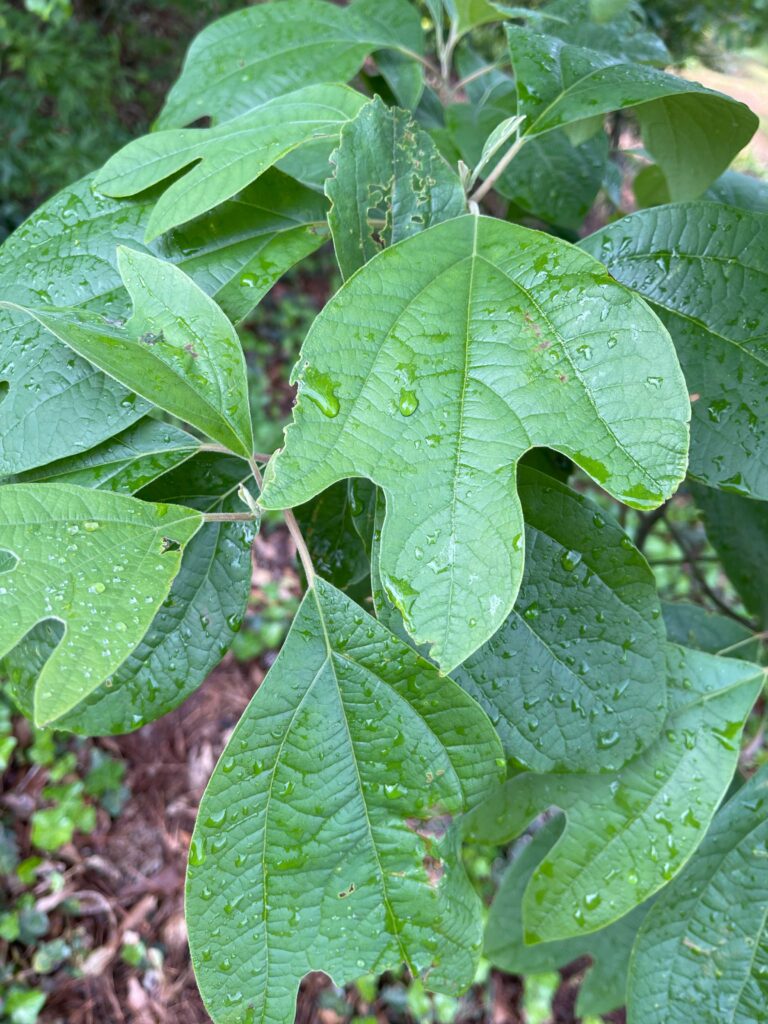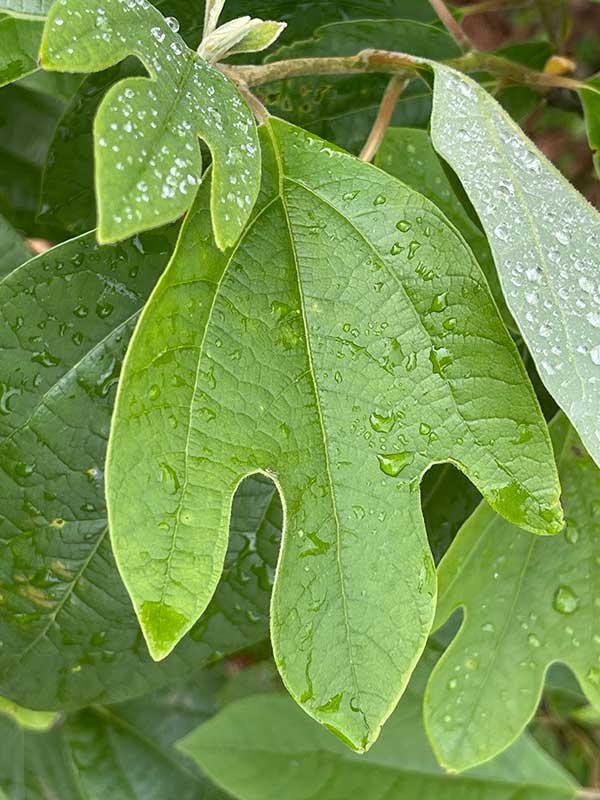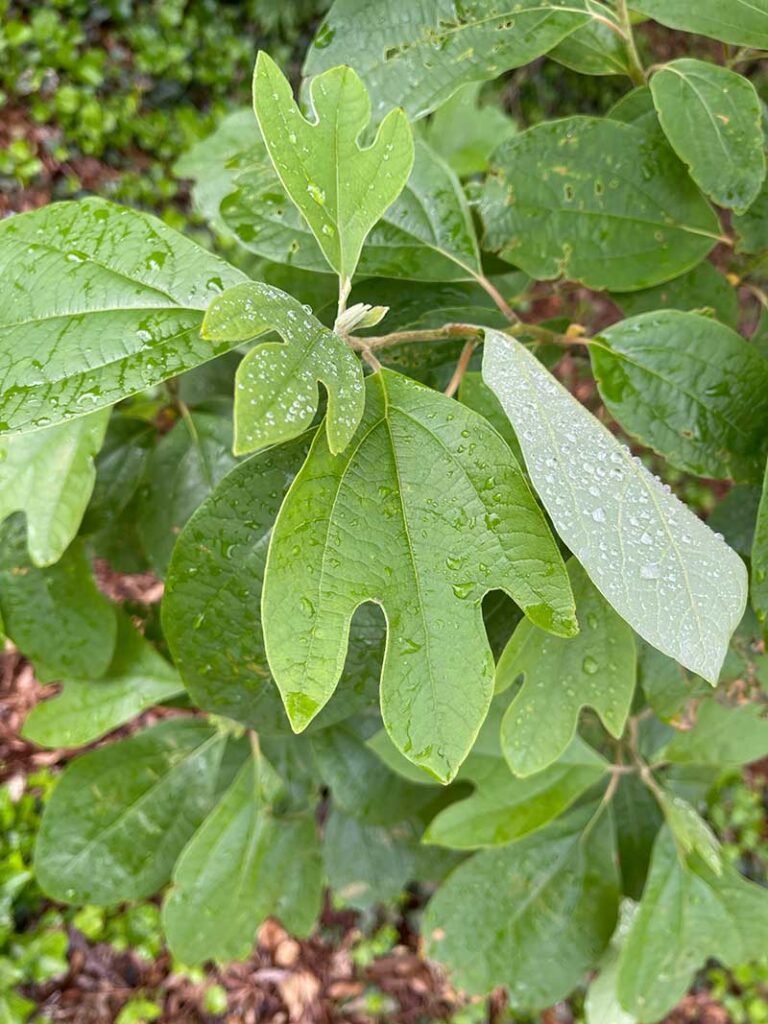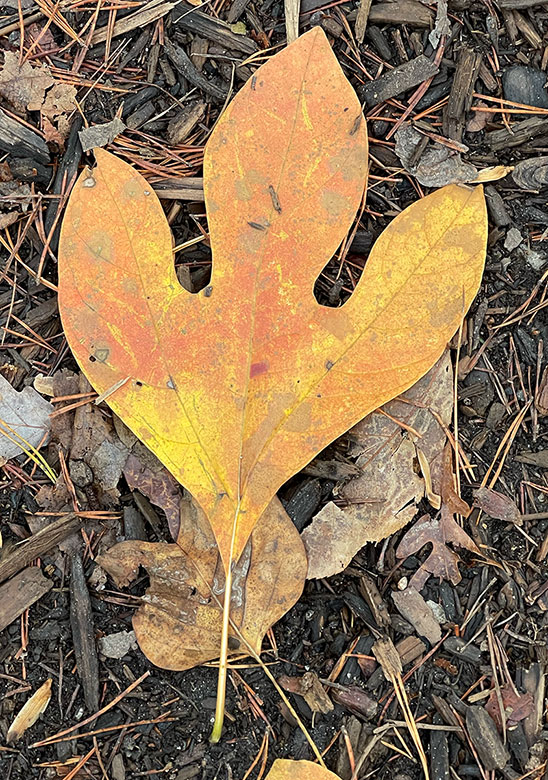I often see sassafras growing along the trails, in the forest breaks, and in old fields. However, it’s the mitten-shaped leaves that stand out to me.
If you break off a twig of a sassafras tree and smell it, you get the distinct smell of root beer. My dad used to do this for us every time we took a hike with him. It was a family tradition and has made me love the sassafras tree.
Sassafras Range & Habitat
Sassafras (Sassafras albidum) is a deciduous tree native to eastern North America, ranging from Maine to Florida and west to Texas. It grows best in well-drained soils and prefers moist, fertile habitats such as riverbanks, swamps, and bottomlands.
Sassafrass Leaves & Description
Sassafras trees can reach up to 60 feet in height with a medium-fast growth rate. It can grow up to 4 feet each year. The lifespan of this small native tree is about 30 years.
The bright green leaves of the sassafras tree have a distinctive appearance, with three different leaf shapes: oval, mitten-shaped, and three-lobed.
The tree’s bark is reddish-brown and deeply furrowed, while its wood is light, brittle, and aromatic, making it useful for various purposes, such as making furniture, fence posts, and paper.
The male and female flowers occur on separate trees, so you must have both for your tree to produce fruits.



Wildlife Benefits of Sassafrass
Sassafras is an important food source for wildlife, with its fruits, leaves, and twigs providing nourishment for many species. For example, the tree’s fruits are eaten by bear, deer, and birds such as quail, wild turkeys, and thrushes, while its leaves and twigs are consumed by white-tailed deer, rabbits, and beaver.
Sassafras also provides habitat for numerous insect species, including butterflies, moths, and beetles. Additionally, it serves as a host plant for spicebush swallowtail and eastern tiger swallowtail caterpillars, as well as the caterpillars of several other moths.
Sassafrass also has several medicinal and culinary uses. For example, the tree’s leaves and bark contain essential oils that have been traditionally used to treat various ailments such as rheumatism, fever, and coughs.
Growing Tips
Grow this small tree in full sun to partial shade in well-drained soil. It doesn’t transplant well once developed as it has a large taproot. However, it is hardy in USDA zones 4 to 9. You can grow sassafras as a single tree or a dense thicket. To encourage a single tree, prune other shoots. While sassafras is drought-tolerant, it prefers moist, well-drained soil.
Sassafras can make a good addition to the edges and medians of parking lots or as a privacy screen in a residential area.

Fall Color
One of the best things about the sassafras tree (other than its scent) is the lovely shades of red, orange, and dark purple of its leaves in fall. To have the fall color show at its best, plant the tree in full sun and against a background of dark evergreens.

